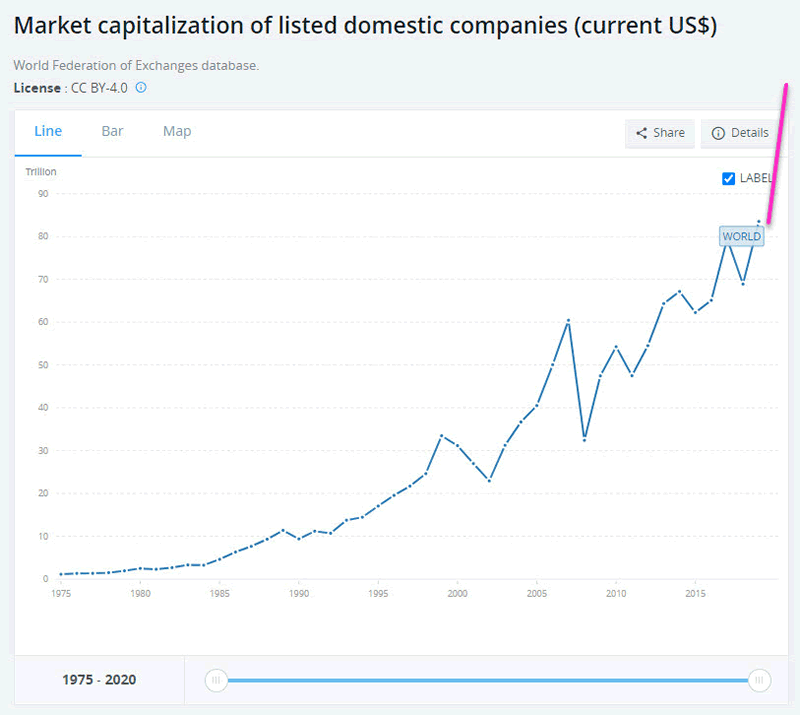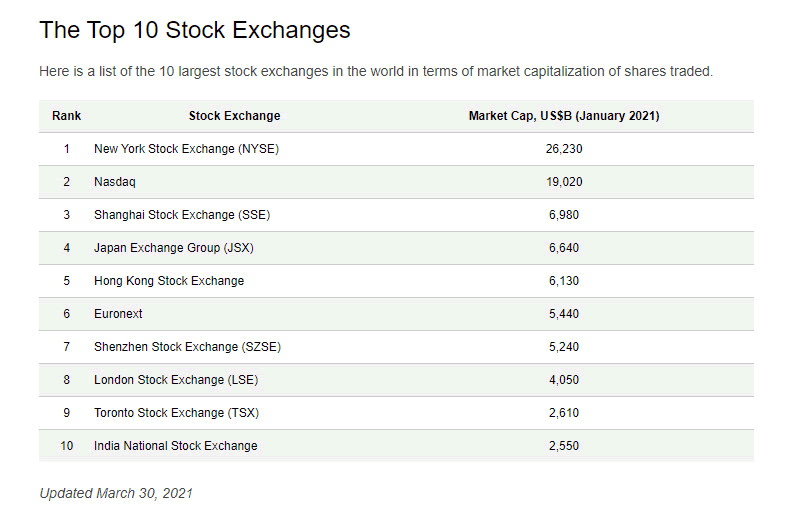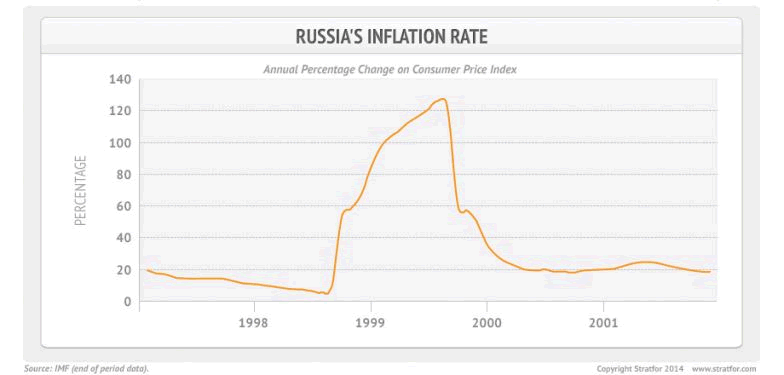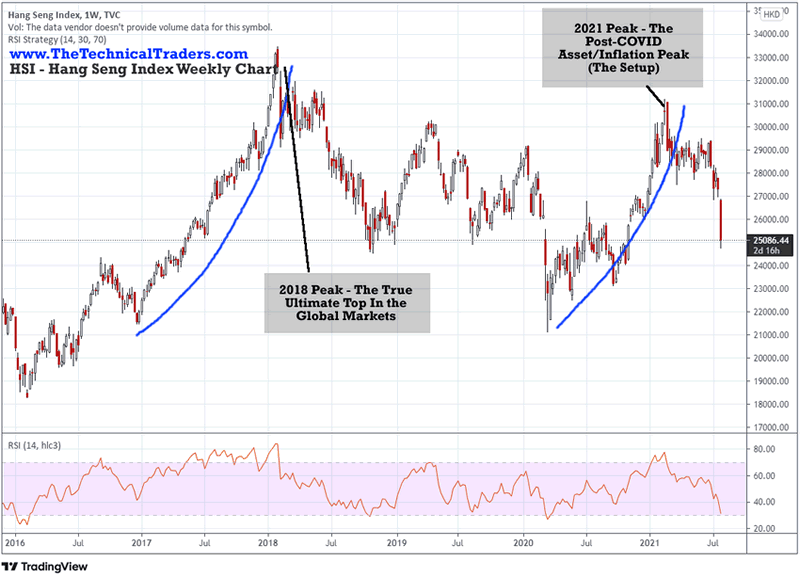The Inadvertent Debt/Inflation Trap – Is It Time for the Stock Market To Face The Music?
Stock-Markets / Stock Market 2021 Jul 30, 2021 - 02:53 PM GMTBy: Chris_Vermeulen
What happens to a global economy after 10+ years of global central bank efforts to support a recovery attempt after a massive credit/debt collapse originates from a prior credit/debt housing bubble? What happens to global economies when they become addicted to easy money policies and central bank activities that support greater and greater risk-taking? What is the end result of these actions after more than 10+ years of excess and central bank support for the markets?
Let’s play this out a bit to think about how the current market environment may be similar to what happened in the mid/late 1990s and see if we can come to any real conclusions. Remember, we are using our research and technical analysis skills to play a “what if” scenario in this research article. Our current trading systems have not warned us of any major Bearish price trends of price collapses that may take place. Our systems are still trading the US markets based on current market trends. This research is completely speculative in the sense that we are trying to identify “what if” scenarios based on events in the recent past.
Be sure to sign up for our free market trend analysis and signals now so you don’t miss our next special report!
One thing that our research team has been discussing over the past 8+ months, since shortly after the US elections in November 2020, is the idea that the new US President/US Federal Reserve may engage in policies that are initially perceived as supportive of the global markets in a post-COVID world – yet may engage in very dangerous end results. An example of this is the continued stimulus efforts for a world that has somewhat moved beyond the initial COVID shock and has transitioned into a new form of economic activity. Another example would be the US Federal continuing to act in a manner to support the US equities market while Inflation and consumer activity have recently shown extreme pricing/buying activities.
One idea that my research team suggested is this activity may be similar to President Ronald Reagan’s Star-Wars project in how Reagan was able to prompt a spending excess between the US and Russia which eventually broke the Russian economy. The process between that event and what is happening right now are strangely similar.
The Strange Outcome Of Global Central Bank Policies – The US Is The Clear Winner
The US and many foreign central banks have pushed the envelope of easy money policies over the past 8+ years by continuing to run programs to support a stronger economic outcome. The focus has been on creating an inflationary target to start a more traditional shift away from the ongoing easy money policies. Inadvertently, these global central banks may have created and supported one of the biggest asset shifts/bubbles in the past 50+ years.
The COVID-19 virus event may have actually pushed the US Federal Reserve and foreign global central banks into an inadvertent process of creating a massive inflation trap at a time when the global economy and corporate world was banking on much more mild inflationary trends. The reflation trade that came after June 2020 is likely to have pushed assets, commodities, credit & debt cycles beyond any conceivable scope of reason, while putting unimaginable pressure on foreign central banks in Asia, South America, Africa, and most of the emerging markets. The incredible rally in commodities, asset values (homes, stocks, US equities, and others) prompted capital to shift towards the strongest and most capable outcomes on the planet. This created a liquidity trap in many foreign markets where traders moved assets into US equities, Cryptos, US ETFs, and other assets while shunning less dynamic and secure global assets.

(Source: https://data.worldbank.org/indicator/CM.MKT.LCAP.CD)
What has transpired over the past 10+ years is that the US equities markets have risen to levels above the 2007~08 peak levels. US equities have also continued to skyrocket higher as foreign investors seek to move assets into US Dollar-based equities and ETFs, and away from stagnant, under-performing local equities and assets. Currently, the US stock market total capitalization makes up nearly $48T of the total global market capitalization. The next closest foreign market exchange is China, which makes up nearly $12T in total capitalization.

(Source: https://www.advratings.com/companies/the-largest-stock-exchanges)
When one takes into consideration the massive expansion of state, corporate, consumer, and global credit/debt that has taken place over the past 10+ years in China (and the risks associated with servicing that debt as well as increased commodities/asset costs which have taken place over the past 24+ months) one starts to consider if China may suddenly turn into Russia of the late 1990s.
At that time, the inflation rate in Russia reached over 120% and took place after a number of key economic events set up an almost perfect storm. The aftermath of this event continued to create moderate global market crisis events.
- 1973 & 1979 Energy/Oil Crisis
- 1982 US Interest Rate Peak/Recession
- 1983 Israel Bank/Stock Crisis
- 1987 Black Monday
- 1991 India Economic Crisis
- 1994 Mexican Peso Crisis
- 1998 Russian Financial Crisis
Although the names and dates of these events are much different than what is set up today, imagine the 1973/79 oil/energy crisis was the peak in oil prices in 2018. Imagine the 1982 peak in US interest rates was the peak in interest reached in 2018. Imagine the Israel Bank/Stock Crisis and the 1987 Black Monday was the 2020 COVID crisis. Imaging the 1991 India Economic Crisis, and 1994 Mexican Peso Crisis were the post-COVID economic and current crisis events that have taken place over the past 14+months throughout the world. Now, imagine that China is the new 1998 Russian Financial Crisis taking place. One of the biggest and strongest economies in the world is now at risk of entering a severe inflationary period where excess credit/debt of the past few decades may be washed away – just like what happened in Russia.

(Source: https://www.timetoast.com/timelines/financial-crisis-1900s-2017)
Lastly, remember what came about after these events took place and how isolated the world was from the Russian economic collapse in the late 1990s. The world is not so isolated any longer. If China initiates a credit/debt crisis event, there is a very strong likelihood that the global markets will react to this event moderately violently.
The Hang Seng Index May Foretell A Collapse In The Making
The typical process of the unwinding of this excess credit/debt/liability usually takes place in a common process. First, individuals, corporations, and state-run agencies load up on cheap debt while inflation and costs are relatively consistent. Then, as the economy heats up, inflation, commodity prices, and equipment/material costs begin to skyrocket – eating into operational profits for these entities. Meanwhile, the need to service the debt/credit persists. As fractures in the system become evident (usually starting with isolated debt defaults by some large entities), investors start pricing greater risks into the credit/debt markets – further complicating the issues for these entities that are burdened with excess debt and diminishing profit margins.
Looking at the Russian Inflation Rate chart, above, any type of major inflationary increase will usually push these entities over the edge in terms of sustainability. Once the cost of refinancing the debt and ongoing profit margins have been squeezed beyond limits, the crisis escalates to a point of implosion.

Given the rise in Real Estate, Commodities, Oil/Energy costs, and other factors, we believe this event may be unfolding right before us in current market trends. China may be the focus of what Russia was in the late 1990s with extensive credit/debt issues, massive imports of raw materials, commodities, and food, and extensive global foreign debt/credit issues related to the Belt Road project. If a global event were to unfold, which we are only speculating MAY happen at this point, China and Asia would become the focal point for this process.
More than ever, right now, traders need to move away from risk functions and start using common sense. There will still be endless opportunities for profits from these extended price rotations, but the volatility and leverage factors will increase risk levels for traders that are not prepared or don’t have solid strategies. Don’t let yourself get caught in these next cycle phases unprepared.
Want to know how our BAN strategy is identifying and ranking various sectors and ETFs for the best possible opportunities for future profits? Please take a minute to learn about my BAN Trader Pro newsletter service and how it can help you identify and trade better sector setups. My team and I have built this strategy to help us identify the strongest and best trade setups in any market sector. Every day, we deliver these setups to our subscribers along with the BAN Trader Pro system trades. You owe it to yourself to see how simple it is to trade 30% to 40% of the time to generate incredible results.
As something entirely new, check out my new initiative URLYstart to learn more about the youth entrepreneurship program I am developing. This is an online program of gamified entrepreneurship designed to introduce and inspire kids to start their own businesses. Click-by-click, each student will be guided from their initial idea, through the startup process all the way to their first sale and beyond. Along the way, our students will learn life lessons such as communication, perseverance, goal setting, teamwork, and more. My team and I are passionate about this project and want to reach as many kids as possible
Have a great day!
Chris Vermeulen
www.TheTechnicalTraders.com
Chris Vermeulen has been involved in the markets since 1997 and is the founder of Technical Traders Ltd. He is an internationally recognized technical analyst, trader, and is the author of the book: 7 Steps to Win With Logic
Through years of research, trading and helping individual traders around the world. He learned that many traders have great trading ideas, but they lack one thing, they struggle to execute trades in a systematic way for consistent results. Chris helps educate traders with a three-hour video course that can change your trading results for the better.
His mission is to help his clients boost their trading performance while reducing market exposure and portfolio volatility.
He is a regular speaker on HoweStreet.com, and the FinancialSurvivorNetwork radio shows. Chris was also featured on the cover of AmalgaTrader Magazine, and contributes articles to several leading financial hubs like MarketOracle.co.uk
Disclaimer: Nothing in this report should be construed as a solicitation to buy or sell any securities mentioned. Technical Traders Ltd., its owners and the author of this report are not registered broker-dealers or financial advisors. Before investing in any securities, you should consult with your financial advisor and a registered broker-dealer. Never make an investment based solely on what you read in an online or printed report, including this report, especially if the investment involves a small, thinly-traded company that isn’t well known. Technical Traders Ltd. and the author of this report has been paid by Cardiff Energy Corp. In addition, the author owns shares of Cardiff Energy Corp. and would also benefit from volume and price appreciation of its stock. The information provided here within should not be construed as a financial analysis but rather as an advertisement. The author’s views and opinions regarding the companies featured in reports are his own views and are based on information that he has researched independently and has received, which the author assumes to be reliable. Technical Traders Ltd. and the author of this report do not guarantee the accuracy, completeness, or usefulness of any content of this report, nor its fitness for any particular purpose. Lastly, the author does not guarantee that any of the companies mentioned in the reports will perform as expected, and any comparisons made to other companies may not be valid or come into effect.
Chris Vermeulen Archive |
© 2005-2022 http://www.MarketOracle.co.uk - The Market Oracle is a FREE Daily Financial Markets Analysis & Forecasting online publication.



